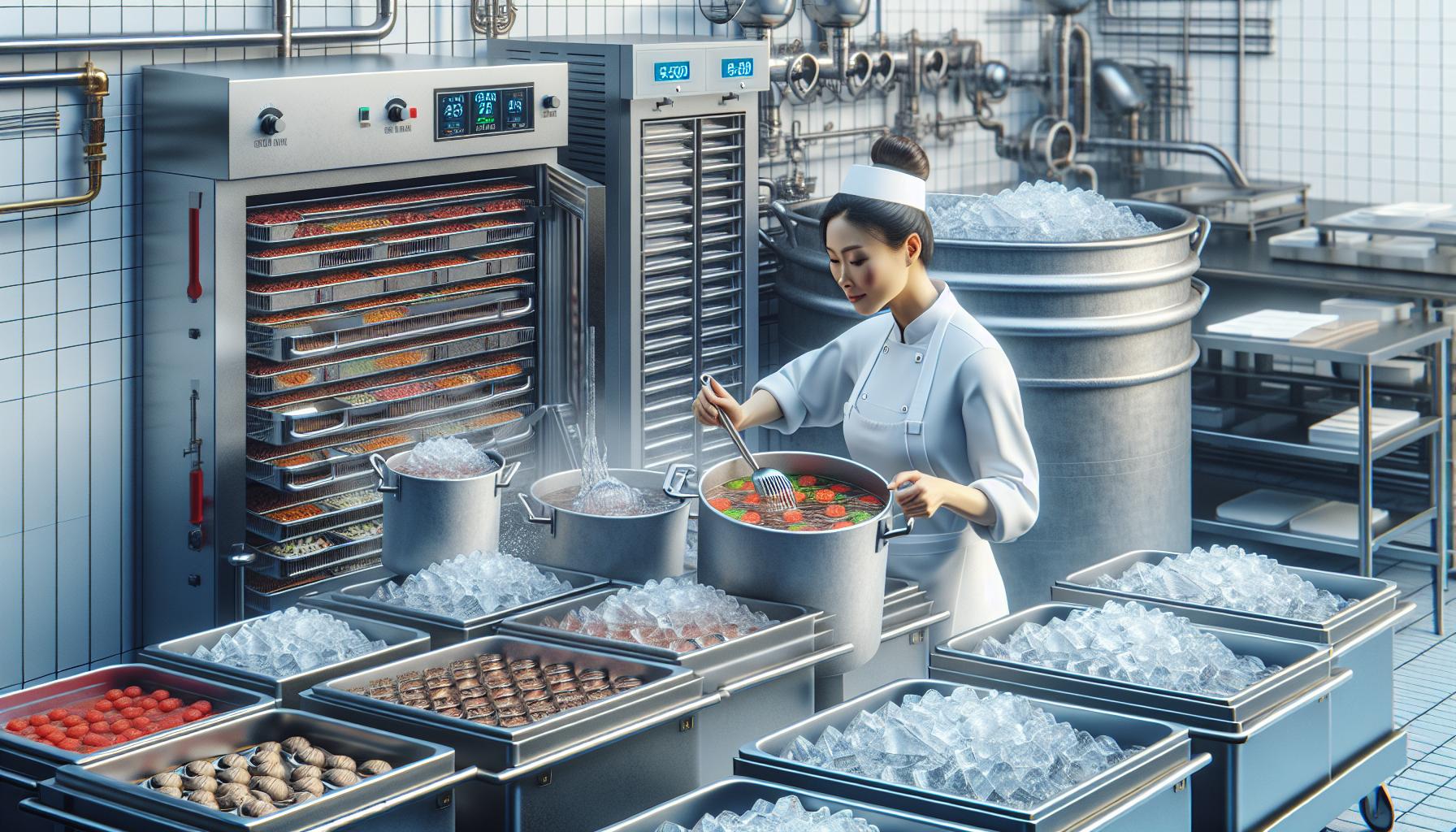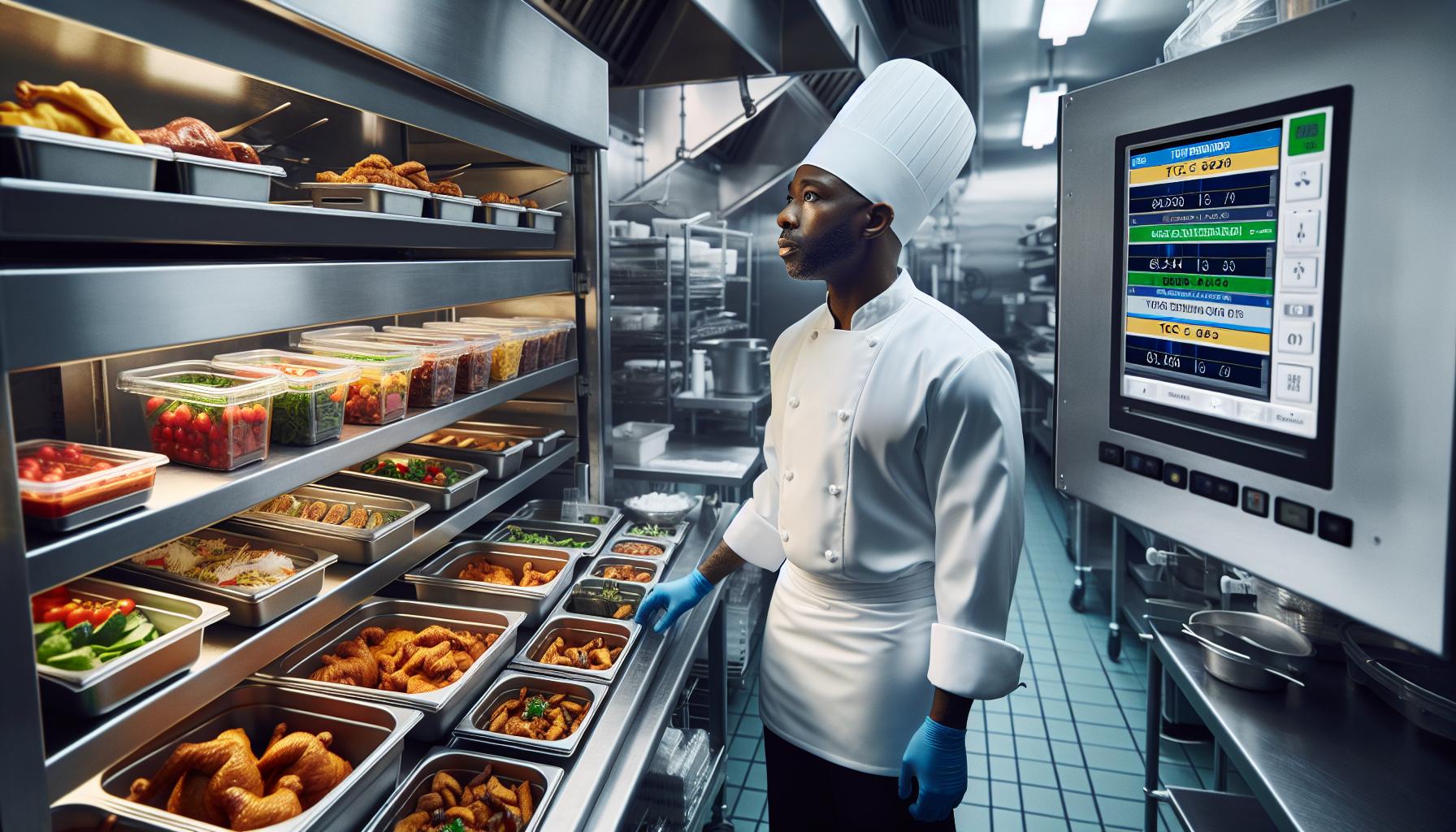
Food safety isn’t just about keeping things clean – it’s a delicate dance between time and temperature. When these two factors aren’t properly managed, they create the perfect environment for harmful bacteria to throw a wild party in your food. And trust us, that’s one party you don’t want to attend!
Temperature control for safety (TCS) foods require special attention because they’re particularly attractive to microorganisms. Think of foods like milk, eggs, meat, and seafood as VIP lounges for bacteria – they’ll multiply faster than social media trends if left in the wrong conditions. That’s why food service professionals need to understand and follow strict time-temperature guidelines to keep these foods safe for consumption.
Time Temperature Control For Safety Food
Time Temperature Control for Safety (TCS) foods require specific storage temperatures to prevent bacterial growth leading to foodborne illness. These foods contain moisture content high protein levels that create ideal conditions for pathogenic microorganisms to multiply.
Common Examples of TCS Foods
TCS foods encompass both raw animal products fresh produce. These include:
- Dairy products: milk yogurt soft cheese
- Proteins: raw meat poultry fish shellfish eggs
- Cooked foods: rice pasta beans vegetables
- Cut produce: melons tomatoes leafy greens sprouts
- Sauces: garlic-in-oil mixtures hollandaise sauce
- Plant-based proteins: tofu tempeh soy products
Why Temperature Control Matters
Temperature control directly impacts bacterial growth rates in food. The temperature danger zone between 41°F and 135°F creates optimal conditions for bacteria multiplication. Here’s what happens at different temperature ranges:
| Temperature Range | Bacterial Activity |
|---|---|
| Below 41°F | Bacteria growth slows |
| 41°F – 135°F | Rapid bacteria multiplication |
| Above 135°F | Bacteria begin to die |
Proper temperature monitoring prevents bacteria from reaching dangerous levels. Cold foods stay at or below 41°F while hot foods maintain temperatures at or above 135°F. Regular temperature checks using calibrated thermometers ensure food stays outside the danger zone.
The Danger Zone: Critical Temperature Range

The danger zone spans temperatures between 41°F and 135°F (5°C to 57°C), creating optimal conditions for bacterial growth in TCS foods. This temperature range enables rapid multiplication of harmful pathogens that cause foodborne illnesses.
Bacterial Growth in the Danger Zone
Bacteria multiply exponentially in the danger zone, doubling in number every 20 minutes under ideal conditions. A single bacterium multiplies into 131,072 bacteria within 7 hours at room temperature (70°F). Pathogenic bacteria thrive between 70°F and 125°F (21°C to 52°C), producing toxins that remain active even after cooking. Common bacteria found in this range include:
- E. coli thrives at 98.6°F (37°C)
- Salmonella reproduces rapidly at 95°F (35°C)
- Listeria grows at temperatures as low as 35°F (2°C)
- Staphylococcus aureus produces toxins at 68°F to 115°F (20°C to 46°C)
Safe Temperature Ranges
Temperature control maintains food safety through specific ranges:
Cold Storage:
- Below 32°F (0°C): Freezing temperatures stop bacterial growth
- 32°F to 41°F (0°C to 5°C): Safe refrigeration range
- 41°F (5°C): Maximum cold holding temperature
Hot Holding:
- 135°F (57°C): Minimum hot holding temperature
- 145°F to 165°F (63°C to 74°C): Safe cooking temperatures
- Above 165°F (74°C): Kills most harmful bacteria
These temperature ranges prevent bacterial growth when maintained consistently through proper storage equipment monitoring.
Proper Cooling and Storage Methods

Time temperature control for safety (TCS) foods require specific cooling and storage procedures to prevent bacterial growth. Implementing proper methods ensures food remains safe throughout its storage duration.
The Two-Stage Cooling Process
The two-stage cooling process reduces food temperature through specific time and temperature targets. Hot foods cool from 135°F to 70°F within 2 hours during the first stage. The second stage requires cooling from 70°F to 41°F within an additional 4 hours, creating a total cooling time of 6 hours maximum. Food service operators achieve rapid cooling by:
- Dividing large food portions into smaller containers
- Using ice-water baths for quick temperature reduction
- Placing food in blast chillers or freezers
- Stirring hot foods frequently to release heat
- Using shallow metal pans instead of deep containers
- Adding ice as an ingredient when applicable
- Storing raw meat below ready-to-eat foods
- Maintaining frozen foods at 0°F or below
- Keeping dairy products at 41°F or lower
- Storing eggs at 45°F or below
- Monitoring temperatures every 4 hours
- Recording temperature logs daily
| Storage Type | Temperature Requirement |
|---|---|
| Freezer | 0°F or below |
| Refrigerator | 41°F or below |
| Eggs | 45°F or below |
| Hot Holding | 135°F or above |
Time Control Measures

Time control measures establish specific timeframes for safely handling TCS foods when they’re outside of proper temperature controls. These measures prevent bacterial growth during food preparation service.
The Four-Hour Rule
The four-hour rule limits TCS food exposure to temperatures between 41°F and 135°F. Foods kept in the temperature danger zone for more than 4 hours become unsafe for consumption. This rule applies to both hot foods held below 135°F and cold foods held above 41°F. The countdown begins when food first enters the danger zone temperature range. Food service establishments track exposure times using time-marking systems such as labels date-dot stickers or digital monitoring devices. Any food that exceeds the 4-hour limit requires immediate disposal.
Using Time as a Public Health Control
Time as a public health control (TPHC) provides alternative food safety measures when temperature control isn’t practical. Food establishments implement TPHC through written procedures approved by regulatory authorities. These procedures include marking each food container with the time limit discard point tracking systems to monitor elapsed time clear identification of foods under TPHC. Establishments maintain records of time monitoring for 6 months. Foods under TPHC include working supplies of ready-to-eat items pizza toppings shell eggs for immediate service mixed ingredients for cold holding. The maximum time limit extends to 6 hours if food temperatures stay at or below 70°F throughout service.
Monitoring and Recording Temperatures
Temperature monitoring forms the foundation of food safety compliance in commercial kitchens. Regular temperature checks maintain food safety standards while preventing bacterial growth in TCS foods.
Calibrating Thermometers
Thermometer calibration ensures accurate temperature readings for food safety monitoring. Food service establishments calibrate their thermometers using the ice-point method (32°F) or boiling-point method (212°F at sea level). Digital thermometers require verification against a calibrated reference thermometer, while bimetallic stemmed thermometers include a calibration nut for manual adjustment. The calibration process includes:
- Testing thermometers at the start of each shift
- Documenting calibration results in a designated log
- Adjusting readings that deviate by more than 2°F
- Marking calibrated thermometers with calibration dates
- Replacing damaged or inaccurate thermometers immediately
Temperature Log Requirements
Temperature logs create a verifiable record of food safety compliance. These logs document temperatures at specific intervals throughout food storage handling processes:
| Monitoring Type | Frequency | Required Information |
|---|---|---|
| Cold Storage | Every 4 hours | Unit temperature date time initials |
| Hot Holding | Every 2 hours | Food temperature location time initials |
| Cooling Process | 2 hour 6 hour marks | Starting temp final temp time initials |
| Cooking Temps | Each batch | Internal temp food item time initials |
- Receiving temperatures of delivered TCS foods
- Storage unit temperatures during each shift
- Cooking temperatures of prepared items
- Cooling process temperature checkpoints
- Hot holding unit temperature readings
Food Safety Management Systems
Food safety management systems provide structured approaches to identify control food safety hazards in commercial kitchens. These systems integrate time temperature control protocols with comprehensive monitoring procedures to prevent foodborne illness.
HACCP Principles for TCS Foods
Hazard Analysis Critical Control Point (HACCP) establishes seven core principles for managing TCS food safety risks:
- Conduct Hazard Analysis
- Identify biological, chemical physical hazards
- Evaluate severity potential occurrence of each hazard
- Document control measures for identified risks
- Determine Critical Control Points
- Establish points where control measures prevent eliminate minimize hazards
- Monitor cooking temperatures for raw meat
- Track cooling times for cooked foods
- Verify storage temperatures for dairy products
- Set Critical Limits
- Maintain cold foods at 41°F or below
- Cook chicken to 165°F minimum
- Cool foods from 135°F to 41°F within 6 hours
- Monitor CCPs
- Check temperatures every 4 hours
- Record results in temperature logs
- Calibrate thermometers daily
- Establish Corrective Actions
- Reheat foods not meeting temperature requirements
- Discard items exceeding time limits
- Repair malfunctioning equipment immediately
These HACCP principles create a systematic approach to preventing foodborne illness while ensuring TCS foods remain safe throughout storage preparation service.
Training Staff on TCS Food Handling
Food service employees receive comprehensive TCS food safety training through structured programs that cover essential handling procedures. These programs integrate hands-on demonstrations with theoretical knowledge to ensure proper food safety practices.
Core Training Components
- Temperature monitoring protocols for different storage units
- Proper use calibration of thermometers
- Time control documentation procedures
- Cross contamination prevention techniques
- Personal hygiene requirements
Training Documentation Requirements
- Initial food safety certification completion dates
- Regular refresher course participation records
- Temperature monitoring competency assessments
- Written examination scores
- Practical skills evaluation results
- Daily supervisor observations of handling practices
- Weekly review of temperature logs
- Monthly internal audits of documentation
- Quarterly performance assessments
- Annual recertification requirements
Food handlers demonstrate temperature monitoring proficiency through practical assessments using calibrated thermometers. Training programs emphasize the critical control points in TCS food handling:
| Critical Control Point | Temperature Requirement | Monitoring Frequency |
|---|---|---|
| Cold Storage | 41°F or below | Every 4 hours |
| Hot Holding | 135°F or above | Every 2 hours |
| Cooking | Product-specific temps | Each batch |
| Cooling | 135°F to 41°F in 6 hours | Every 2 hours |
| Reheating | 165°F within 2 hours | Each item |
Staff members learn to recognize temperature danger zones through interactive exercises that simulate real kitchen scenarios. Regular assessments validate their understanding of proper TCS food handling procedures.
Proper time and temperature control for safety foods stands as a cornerstone of food safety in commercial kitchens. By maintaining strict temperature controls monitoring protocols and implementing comprehensive food safety management systems food service professionals can effectively prevent foodborne illnesses.
Success in TCS food safety relies on well-trained staff proper documentation and regular monitoring of critical control points. Food service establishments that prioritize these practices protect their customers’ health while maintaining their reputation and regulatory compliance.
Temperature monitoring coupled with precise time control serves as the foundation for safe food handling. Through dedicated adherence to these principles and continuous staff education food service operations can ensure their TCS foods remain safe from storage through service.


